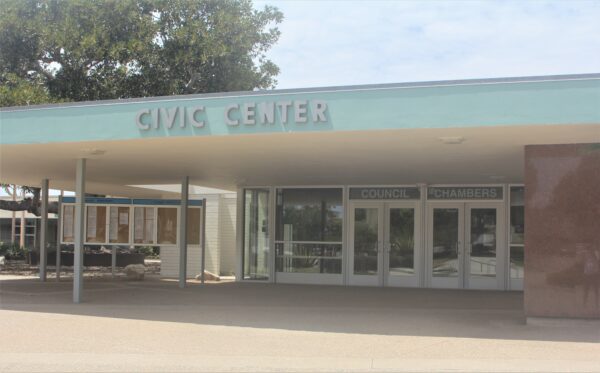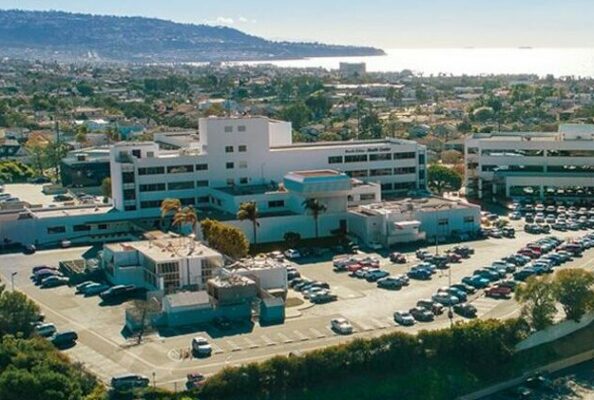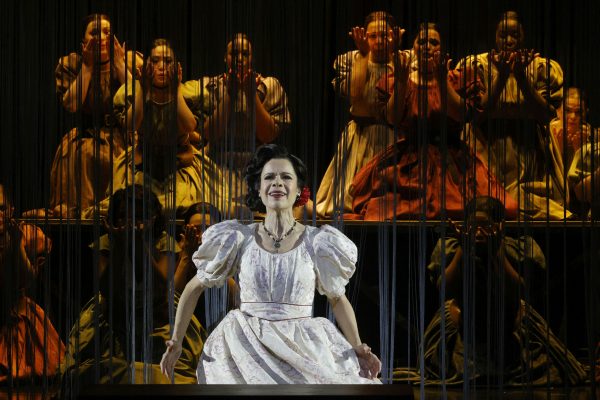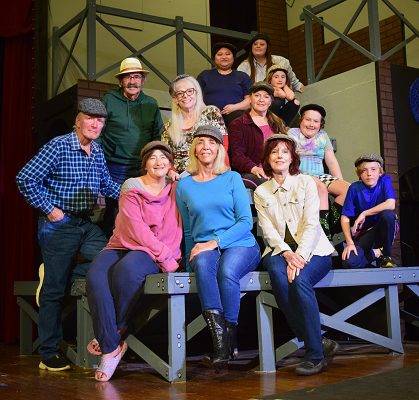
Arriving there during the waning years of the 19th century, writers and artists “relished Venice because it was so rarefied and dreamlike, and so inexorably doomed.” Richard Ormond, in Sargent and Italy, also added that these visitors “reveled in the idea of the city as a place of decaying splendor and corroding beauty, of sensual indulgence and liberation from convention.” In the words of Henry James, Venice was “the most beautiful of tombs.”
Photographer Jim McKinniss, who lives in Redondo Beach, has been focused on Venice. Every year he returns to immerse himself in it yet again, and every year he explores and coaxes forth a little more of its hidden splendor and at the same time his own sensibility as an artist emerges to become one with this ongoing endeavor.
However, McKinniss did not arrive at his craft by way of curatorial positions in galleries or by writing dissertations on Paul Strand or Minor White, or by living in a garret with Vogue cover models on the Left Bank of Paris.
“I have a Masters in Mathematics,” he says, “and I was in the academic world for a few years. I taught at the University of California and did some student teaching in Hawaii and then several community colleges in Northern California.
“I moved to Southern California in 1980, and in about 1982 I started a software design business. When I started getting ready to retire after about 25 years I decided it was time to do something.” That something was photography, which up until then McKinniss had indulged in only for pleasure.
“I took a couple of adult classes on how the camera functions and some of the technical things,” he says. “Then, when I did retire I started spending more time with photography and really trying to express an artistic vision. It’s taken me probably six or seven years before I’ve arrived at the point where I am now, where I’ve developed my own sense of what makes a good photograph.” Along the way he picked up a feel for what kinds of subjects truly engage him. High on the list, of course, was Venice:
“I’ve been going there for about six years now, every year, during Carnival.”
no images were found
On the waterfront
“Performers come from all over the world,” McKinniss says, “and they wear these intricate, very beautifully colored, very beautifully designed costumes that (make the wearers) look like they may be going to a masked ball in the 1700s.
“I decided about two years ago to change my photographs from color to monochrome, which is either black-and-white or sepia.” Sepia can be either brown or brownish-red, depending on what the squid or cuttlefish ate for dinner. “The reason I did that is because on any given day during Carnival there’s at least a million photographs taken. And, I’m guessing, 98 percent are color photos. So, to make my work stand out from the crowd, so to speak, I convert them. The sepia goes very well with conveying the mood of being in the 17th or 18th century because of the architecture.”
Venice, much like its counterpart to the north, Bruges, is among those canal cities which froze in time when the commerce that had sustained them essentially dried up. The money flowed elsewhere, but the buildings stayed put. As the centuries passed, Venice became mysteriously enigmatic and alluring.
“That’s one of the things that sepia will do for you,” McKinnis says. “It’s different than monochrome and black-and-white because in sepia you don’t have any pure whites and everything has a brownish tint to it. And then the shadows; because of the browns it tweaks the shadows and makes them richer in some ways.
“It sets a mood and atmosphere,” he continues. “It also conveys a sense of decay and that’s what’s happening to Venice. It’s continually being rebuilt, first of all because it’s sinking and secondly – because of the very high tides that occur every so many years – salt gets into the bricks and then they start deteriorating. It’s falling apart, and being rebuilt, but eventually it will probably go into the sea, like everything.”
These words echo what José Saramago said of Visconti’s film, “Death in Venice,” that it was set “in the only authentic Venice: a city of silence and shadows, with that black fringe imprinted on facades by the water in the canals and that all-pervading stench of dampness which no amount of sunshine can remove. Of all the cities I know, Venice is the only one that is manifestly dying; she knows it and, being a fatalist, is not unduly concerned.”
Breadth in Venice
“There are many cities that have small canals,” McKinniss notes, “but for Venice the canals are the transportation method. There’s something like three or four hundred bridges there, and you’re never more than a few blocks or streets from a canal in Venice. It gets vey disorienting (but) I’ve been there so many times I can find my way around pretty easily.”
McKinniss usually spends about a week in Venice. Next time, though, he hopes to stay for a month.
“The problem with Carnival is there’re so many people around and there’s so much advertisement; some of the things that you want to photograph have huge advertisements on them and you can’t get the photo you want. And so, after Carnival closes down, I’ll have a couple of weeks there to just photograph.” With luck, most of the revelers will have headed home. With more luck, signs and banners will have been removed.
Carnival is basically Mardi Gras, and it takes place right before Lent, which is also at the same time as the world-famous Rio Carnival – although every city and village in Brazil celebrates the occasion just as fervently if not with so much ostentation.
Do you go to Venice at the same time every year?
“When I first went there, in 1989, I was there in September,” McKinniss replies, “and then I went back in 2000, and from 2006 or 2007 I’ve been going every year at Carnival, because I meet up with a group of 11 or 12 photographers, mostly Norwegians.”
Do each of you have your own interest, your own focus? And when you get together do you talk and exchange ideas?
“Well, most of them come to photograph the performers,” he says. “We don’t usually stick together. I’ll get up at 5 or 5:30 in the morning and go out and try and get some of the performers before the sun comes up. It’s a vacation for them (his colleagues), so they’re more interested in sleeping and they get up a little bit later. We usually meet for breakfast around 7:30 or 8 at the hotel. Then we go off and do our own thing and come back, and most of the time we go to dinner together. Like most European countries dinner is pretty late, so we won’t finish dinner and get back until 11, 11:30 at night. And then I get up at 5 again and start all over.”
You’re still photographing the performers. Has your focus on what you photograph changed at all?
“Not really,” McKinniss says, “but a little bit of how I photograph has changed. Until about two years ago I was always using the 100mm lens. To get the shallow depth of field I open the lens up and so I get sharp focus on the eyes and the ears and that type of thing. But it’s still a real tight shot, mostly of the masks.
“Two years ago,” he continues, “I started using a 50mm lens, and so now I’m starting to incorporate more architecture into the image. I like that because it gives more of a feeling of place.”
Now it’s not just a costumed person, but a larger slice of context, with historical buildings and waterways ensnared along with the plumage of the ephemeral.
“I also use some layering, some texture,” McKinniss says, “that gives it that look and feel of being an older photograph. It helps to convey the sense that these things could have been in the 1800s. Or even, if they had photographs, in the 1700s.”
In this respect one could say that his work is experimental, because he’s always trying out new ideas. For a show last fall at the Palos Verdes Art Center – “L’aura borealis: 100 Ways to Look at the Muse” – no one came up with as many thoughtful variations on the subject, Laura Orr, who was the visual focus of the exhibition.
“For me, one of the biggest enjoyments I get from photography is what they call the post-production work, where I can use Photoshop to interpret what I captured, because almost nothing that I do is straight out of the camera.”
You’ll continue with this series?
“I will be extending it in February,” McKinniss says, implying that if you’re looking around for him at that time you’d be smart to begin somewhere along the Grand Canal. “And I’m planning on doing a book when I have enough photos, but I need at least 50 to 80 photos for a book.”
He has far more than that now, but he wants the best selection possible to choose from.
I praise his artistic sensibility, and comment that I have long responded to it and admired his work.
“What every artist wants is an emotional response, either positive or negative,” he says, and then adds: “It’s nice to have the positive one.”
If we close our eyes, we can, in the words of Sándor Márai, envision Jim McKinniss up at 5 or 5:30, “on his way back to the palazzo across the lagoon, passing the sleepy houses, his gondola swaying through the dreamy leaden water in the heartbreaking silence of first light, disturbed only by the splashing of oars which Venice alone offers by way of greeting to the nocturnal traveler as he emerges into dawn, moving down the Lethean current into the mysterious heart of the city.”
Photography by Jim McKinniss will be on display at Beach magazine’s Live at the Lounge event, which includes readings and music, Nov. 17. Doors open at 5:30, show begins at 6:30. 1018 Hermosa Ave., Hermosa Beach.










